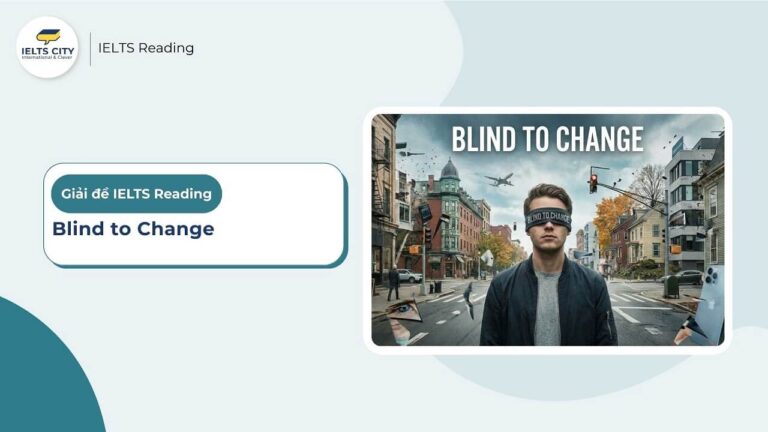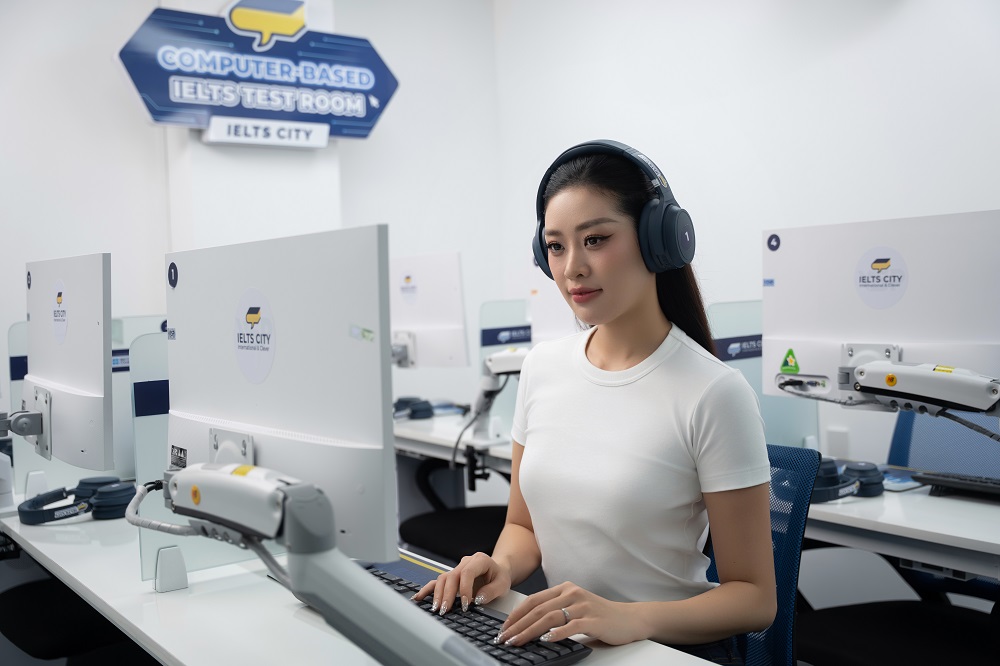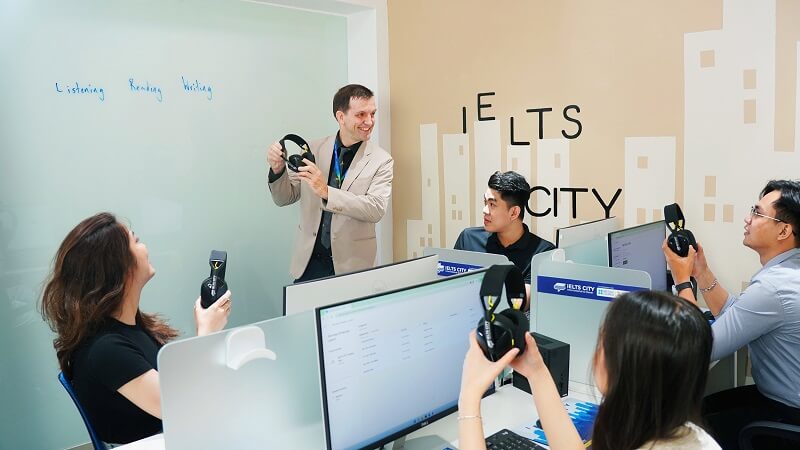
Nội dung chính
Toggle1. Matching Features là gì?
Matching Features là một trong các dạng bài IELTS Reading phổ biến. Trong dạng này, thí sinh sẽ được cung cấp một danh sách các đặc điểm (features) và một danh sách người, địa điểm hoặc các yếu tố khác. Những đặc điểm này sẽ được đánh dấu bằng các chữ cái (A,B, và C). Ví dụ, các bạn có thể phải ghép các nghiên cứu với danh sách các nhà nghiên cứu, hoặc ghép sự kiện lịch sử, v.v… Sau đó yêu cầu thí sinh ghép đúng các đặc điểm với người hoặc yếu tố tương ứng dựa trên thông tin trong bài đọc.
Bài tập này đánh giá khả năng của các bạn trong việc nhận diện mối quan hệ và kết nối giữa các sự kiện trong bài, cũng như khả năng nhận biết quan điểm và lý thuyết. Dạng bài này có thể được áp dụng cho cả thông tin thực tế (factual) lẫn các bài viết mang tính quan điểm (discursive) . Các bạn sẽ cần đọc lướt (skim) và đọc quét (scan) bài để tìm thông tin cần thiết, sau đó đọc kỹ để ghép đúng đặc điểm.
Ví dụ:
The robots are coming
What is the current state of play in Artificial Intelligence?
A. Can robots advance so far that they become the ultimate threat to our existence? Some scientists say no, and dismiss the very idea of Artificial Intelligence. The human brain, they argue, is the most complicated system ever created, and any machine designed to reproduce human thought is bound to fail. Physicist Roger Penrose of Oxford University and others believe that machines are physically incapable of human thought. Colin McGinn of Rutgers University backs this up when he says that Artificial Intelligence ‘is like sheep trying to do complicated psycho analysis. They just don’t have the conceptual equipment they need in their limited brains’.
B. Artificial Intelligence, or Al, is different from most technologies in that scientists still understand very little about how intelligence works. Physicists have a good understanding of Newtonian mechanics and the quantum theory of atoms and molecules, whereas the basic laws of intelligence remain a mystery. But a sizable number of mathematicians and computer scientists, who are specialists in the area, are optimistic about the possibilities. To them it is only a matter of time before a thinking machine walks out of the laboratory. Over the years, various problems have impeded all efforts to create robots. To attack these difficulties, researchers tried to use the ‘top- down approach’, using a computer in an attempt to program all the essential rules onto a single disc. By inserting this into a machine, it would then become self-aware and attain human-like intelligence.
C. In the 1950s and 1960s great progress was made, but the shortcomings of these prototype robots soon became clear. They were huge and took hours to navigate across a room. Meanwhile, a fruit fly, with a brain containing only a fraction of the computing power, can effortlessly navigate in three dimensions. Our brains, like the fruit fly’s, unconsciously recognize what we see by performing countless calculations. This unconscious awareness of patterns is exactly what computers are missing. The second problem is robots’ lack of common sense. Humans know that water is wet and that mothers are older than their daughters. But there is no mathematics that can express these truths. Children learn the intuitive laws of biology and physics by interacting with the real world. Robots know only what has been programmed into them.
D. Because of the limitations of the top-down approach to Artificial Intelligence, attempts have been made to use a ‘bottom-up’ approach instead – that is, to try to imitate evolution and the way a baby learns. Rodney Brooks was the director of MIT’s Artificial Intelligence laboratory, famous for its lumbering ‘top- down’ walking robots. He changed the course of research when he explored the unorthodox idea of tiny ‘insectoid’ robots that learned to walk by bumping into things instead of computing mathematically the precise position of their feet. Today many of the descendants of Brooks’ insectoid robots are on Mars gathering data for NASA (The National Aeronautics and Space Administration), running across the dusty landscape of the planet. For all their successes in mimicking the behavior of insects, however, robots using neural networks have performed miserably when their programmers have tried to duplicate in them the behavior of higher organisms such as mammals. MIT’s Marvin Minsky summarises the problems of Al: ‘The history of Al is sort of funny because the first real accomplishments were beautiful things, like a machine that could do well in a maths course. But then we started to try to make machines that could answer questions about simple children’s stories. There’s no machine today that can do that.’
E. There are people who believe that eventually there will be a combination between the top-down and bottom-up, which may provide the key to Artificial Intelligence. As adults, we blend the two approaches. It has been suggested that our emotions represent the quality that most distinguishes us as human, that it is impossible for machines ever to have emotions. Computer expert Hans Moravec thinks that in the future robots will be programmed with emotions such as fear to protect themselves so that they can signal to humans when their batteries are running low, for example. Emotions are vital in decision-making. People who have suffered a certain kind of brain injury lose the ability to experience emotions and become unable to make decisions. Without emotions to guide them, they debate endlessly over their options. Moravec points out that as robots become more intelligent and are able to make choices, they could likewise become paralysed with indecision. To aid them, robots of the future might need to have emotions hardwired into their brains.
F. There is no universal consensus as to whether machines can be conscious, or even, in human terms, what consciousness means. Minsky suggests the thinking process in our brain is not localised but spread out, with different centres competing with one another at any given time. Consciousness may then be viewed as a sequence of thoughts and images issuing from these different, smaller ‘minds’, each one competing for our attention. Robots might eventually attain a ‘silicon consciousness’. Robots, in fact, might one day embody an architecture for thinking and processing information that is different from ours – but also indistinguishable. If that happens, the question of whether they really ‘understand’ becomes largely irrelevant. A robot that has perfect mastery of syntax, for all practical purposes, understands what is being said.
Question 21 – 23
Look at the following people and the list of statements below.
Match each person with the correct statement A-E. Write the correct letter A-E.
| List of FindingsA Artificial Intelligence may require something equivalent to feelings in order to succeed.B Different kinds of people use different parts of the brain.C Tests involving fiction have defeated Artificial Intelligence so far.D People have intellectual capacities which do not exist in computers.E People have no reason to be frightened of robots. |
21 Colin McGinn
22 Marvin Minsky
23 Hans Moravec
2. Các bước làm bài Matching Features
Để làm tốt dạng bài Matching Features trong IELTS Reading, bạn cần áp dụng một số bước cụ thể để tối ưu hoá thời gian và tăng độ chính xác. Dưới đây là các bước chi tiết:
Bước 1. Đọc các lựa chọn (Features) và gạch chân từ khoá chính.
Từ khoá là những từ có chứa nội dung chính, thường ở dạng danh từ, hành động, hoặc tính từ, vv… Khi đọc và gạch chân, vô tình chúng ta cũng nắm được nội dung chính liên quan tới bài đọc. Sau đó, thử tự nghĩ những từ đồng nghĩa của các từ khóa hoặc những cách khác để diễn đạt cùng ý nghĩa.
| List of FindingsA Artificial Intelligence may require something equivalent to feelings in order to succeed.B Different kinds of people use different parts of the brain.C Tests involving fiction have defeated Artificial Intelligence so far.D People have intellectual capacities which do not exist in computers.E People have no reason to be frightened of robots. |
Bước 2. Xác định Từ khóa trong câu hỏi.
Thường câu hỏi trong matching features ở dạng tên riêng, hoặc những danh từ riêng (tên cây, tên khoa học, sự kiện lịch sử,…) nên Bạn chỉ cần định vị những tên riêng này được đề cập trong bài đọc. Sau đó nhớ khoanh lại để đánh dấu.
| 21 Colin McGinn => Đoạn A 22 Marvin Minsky => Đoạn D, F23 Hans Moravec => Đoạn E |
| A. Can robots advance so far that they become the ultimate threat to our existence? Some scientists say no, and dismiss the very idea of Artificial Intelligence. The human brain, they argue, is the most complicated system ever created, and any machine designed to reproduce human thought is bound to fail. Physicist Roger Penrose of Oxford University and others believe that machines are physically incapable of human thought. Colin McGinn of Rutgers University backs this up when he says that Artificial Intelligence ‘is like sheep trying to do complicated psycho analysis. They just don’t have the conceptual equipment they need in their limited brains’. |
Bước 3. Đọc tất cả những khu vực có tên riêng đã định vị ở bước 1
Vừa đọc, bạn vừa gạch chân những ý chính, chi tiết.
Câu hỏi 21. Colin McGinn
| A. Can robots advance so far that they become the ultimate threat to our existence? Some scientists say no, and dismiss the very idea of Artificial Intelligence. The human brain, they argue, is the most complicated system ever created, and any machine designed to reproduce human thought is bound to fail. Physicist Roger Penrose of Oxford University and others believe that machines are physically incapable of human thought. Colin McGinn of Rutgers University backs this up when he says that Artificial Intelligence ‘is like sheep trying to do complicated psycho analysis. They just don’t have the conceptual equipment they need in their limited brains’. |
=> Hiểu và nắm ý chính: Colin McGinn tán thành (back up) với nhận định “Não người là một hệ thống phức tạp nhất; mọi máy móc thiết kế để tạo ra suy nghĩ con người đều sẽ thất bại || AI như là con cừu cố gắng phân tích tâm lý phức tạp ||| không có những thiết bị cần thiết”
Bước 4. Đối chiếu
Sau đó đối chiếu với các lựa chọn và chọn những câu có ý nghĩa tương tự với các ý chi tiết đã gạch chân trong bài. Bạn cần kiểm tra lại và tìm dẫn chứng cho những câu mình chọn nhé.
=> Chọn Đáp án D: People have intellectual capacities which do not exist in computers. (tương đồng với ý “ They just don’t have the conceptual equipment they need in their limited brains’)
Bạn tiếp tục đọc tất cả những khu vực có tên riêng 2 đã định vị và thực hành các bước sau đó.
Câu hỏi 22. Marvin Minsky
| C. Marvin Minsky summarises the problems of Al: ‘The history of Al is sort of funny because the first real accomplishments were beautiful things, like a machine that could do well in a maths course. But then we started to try to make machines that could answer questions about simple children’s stories. There’s no machine today that can do that.’ F. Minsky suggests the thinking process in our brain is not localised but spread out, with different centres competing with one another at any given time. |
=> Hiểu và nắm ý chính: “Marvin Minsy cho rằng vấn đề của AI là chúng có thể giải quyết các vấn đề Toán học tốt, tuy nhiên khi cố gắng tạo ra các machines để giải đáp về truyện trẻ em (mang yếu tố tưởng tượng), thì không không máy móc nào làm được”.
=> Chọn đáp án C (tests involving fiction || defeated AI, phần thông tin ở F không khớp với bất kỳ lựa chọn nào nên chúng ta có thể bỏ qua nó.
Câu hỏi 23. Hans Moravec
| Computer expert Hans Moravec thinks that in the future robots will be programmed with emotions such as fear to protect themselves so that they can signal to humans when their batteries are running low, for example. Emotions are vital in decision-making. People who have suffered a certain kind of brain injury lose the ability to experience emotions and become unable to make decisions. Without emotions to guide them, they debate endlessly over their options. Moravec points out that as robots become more intelligent and are able to make choices, they could likewise become paralysed with indecision. To aid them, robots of the future might need to have emotions hardwired into their brains. |
=> Hiểu và nắm ý chính: Hans Moravec nghĩ là robots cần được lập trình với cảm xúc để tự bảo vệ mình
=> Chọn đáp án A (require something equivalent to feelings || to succeed)
3. Các lỗi thường gặp khi làm bài Matching Feature
Định vị tên riêng chưa đầy đủ
Tên riêng khi lần đầu đề cập thường được giới thiệu cả họ và tên, kèm với chức danh cũng như công trình nghiên cứu, do đó rất dễ cho chúng ta định vị. Tuy nhiên, nếu người này được để cập ở lần sau, có thể bài đọc chỉ dùng tên hoặc họ. Ngoài ra, bài đọc còn có thể dùng câu tường thuật để nói về người này thay vì câu trực tiếp có dấu “”, do đó nhiều bạn có thể bạn sót khu vực định vị.
Cố tìm các từ khóa, từ vựng chính xác như văn bản gốc.
Bài đọc có thể dùng từ trái nghĩa hoặc một cách diễn đạt dài hơn thay vì một từ đơn riêng lẻ.
Vội vàng khi làm dạng bài Matching Features trong IELTS Reading
Dạng bài này đòi hỏi kỹ năng scanning – tìm thông tin cụ thể, nếu đọc quá nhanh hoặc hấp tấp, bạn có thể bỏ sót một số thông tin quan trọng.
4. Các tips làm bài Matching Feature hiệu quả
- Đọc thật kỹ câu hỏi và gạch chân, khoanh tròn các từ khóa.
- Đọc lướt đoạn văn (skimming và Scanning) để tìm kiếm các từ khóa, từ đồng nghĩa xuất hiện trong đoạn văn.
- Đừng quên điền thông tin trả lời vào phiếu trả lời.
- Thứ tự của câu trả lời sẽ không giống với trật tự của thông tin xuất hiện trong bài đọc.
5. Bài tập Matching Feature
Cùng IELTS CITY thử áp dụng các bước trên cho một đề Matching Feature khác rồi kiểm tra Đáp án và giải thích bên dưới nhé.
The Triune Brain
1) The first of our three brains to evolve is what scientists call the reptilian cortex. This brain sustains the elementary activities of animal survival such as respiration, adequate rest and a beating heart. We are not required to consciously “think” about these activities. The reptilian cortex also houses the “startle centre”, a mechanism that facilitates swift reactions to unexpected occurrences in our surroundings. That panicked lurch you experience when a door slams shut somewhere in the house, or the heightened awareness you feel when a twig cracks in a nearby bush while out on an evening stroll are both examples of the reptilian cortex at work. When it comes to our interaction with others, the reptilian brain offers up only the most basic impulses: aggression, mating, and territorial defence. There is no great difference, in this sense, between a crocodile defending its spot along the river and a turf war between two urban gangs.
2) Although the lizard may stake a claim to its habitat, it exerts total indifference toward the well-being of its young. Listen to the anguished squeal of a dolphin separated from its pod or witness the sight of elephants mourning their dead, however, and it is clear that a new development is at play. Scientists have identified this as the limbic cortex. Unique to mammals, the limbic cortex impels creatures to nurture their offspring by delivering feelings of tenderness and warmth to the parent when children are nearby. These same sensations also cause mammals to develop various types of social relations and kinship networks. When we are with others of “our kind” – be it at soccer practice, church, school or a nightclub – we experience positive sensations of togetherness, solidarity and comfort. If we spend too long away from these networks, then loneliness sets in and encourages us to seek companionship.
3) Only human capabilities extend far beyond the scope of these two cortexes. Humans eat, sleep and play, but we also speak, plot, rationalise and debate finer points of morality. Our unique abilities are the result of an expansive third brain – the neocortex – which engages with logic, reason and ideas. The power of the neocortex comes from its ability to think beyond the present, concrete moment. While other mammals are mainly restricted to impulsive actions (although some, such as apes, can learn and remember simple lessons), humans can think about the “big picture”. We can string together simple lessons (for example, an apple drops downwards from a tree; hurting others causes unhappiness) to develop complex theories of physical or social phenomena (such as the laws of gravity and a concern for human rights).
4) The neocortex is also responsible for the process by which we decide on and commit to particular courses of action. Strung together over time, these choices can accumulate into feats of progress unknown to other animals. Anticipating a better grade on the following morning’s exam, a student can ignore the limbic urge to socialise and go to sleep early instead. Over three years, this ongoing sacrifice translates into a first-class degree and a scholarship to graduate school; over a lifetime, it can mean ground-breaking contributions to human knowledge and development. The ability to sacrifice our drive for immediate satisfaction in order to benefit later is a product of the neocortex.
5) Understanding the triune brain can help us appreciate the different natures of brain damage and psychological disorders. The most devastating form of brain damage, for example, is a condition in which someone is understood to be brain dead. In this state a person appears merely unconscious – sleeping, perhaps – but this is illusory. Here, the reptilian brain is functioning on autopilot despite the permanent loss of other cortexes.
6) Disturbances to the limbic cortex are registered in a different manner. Pups with limbic damage can move around and feed themselves well enough but do not register the presence of their littermates. Scientists have observed how, after a limbic lobotomy2 , “one impaired monkey stepped on his outraged peers as if treading on a log or a rock”. In our own species, limbic damage is closely related to sociopathic behaviour. Sociopaths in possession of fully-functioning neocortexes are often shrewd and emotionally intelligent people but lack any ability to relate to, empathise with or express concern for others.
7) One of the neurological wonders of history occurred when a railway worker named Phineas Gage survived an incident during which a metal rod skewered his skull, taking a considerable amount of his neocortex with it. Though Gage continued to live and work as before, his fellow employees observed a shift in the equilibrium of his personality. Gage’s animal propensities were now sharply pronounced while his intellectual abilities suffered; garrulous or obscene jokes replaced his once quick wit. New findings suggest, however, that Gage managed to soften these abrupt changes over time and rediscover an appropriate social manner. This would indicate that reparative therapy has the potential to help patients with advanced brain trauma to gain an improved quality of life.
Questions 14–22
| Classify the following as typical of A the reptilian cortex B the limbic cortex C the neocortex |
Write the correct letter, A, B or C, in boxes 14–22 on your answer sheet.
14 giving up short-term happiness for future gains
15 maintaining the bodily functions necessary for life
16 experiencing the pain of losing another
17 forming communities and social groups
18 making a decision and carrying it out
19 guarding areas of land
20 developing explanations for things
21 looking after one’s young
22 responding quickly to sudden movement and noise
Đáp án
| Câu hỏi và đáp án | Ứng dụng các bước và Giải thích |
| 14 C | Định vị tên riêng trong bài, ta thấy:the reptilian cortext => Đoạn 1The limbic cortext => Đoạn 2The neocortext => Đoạn 3,4 Đọc khu vực của từng tên riêng: The reptilian cortext => Đoạn 115. “this brain sustains…. beating heart” [bộ não giúp hỗ trợ các hoạt động cơ bản cho sự sinh tồn như hô hấp, nghỉ ngơi và nhịp tim] 19. “the reptilian brain offers up only…. territorial defence” [bộ não bò sát cho phép những xung lực cơ bản nhất như ….. bảo về lãnh thổ] 22. “facilitates swift reactions to unexpected occurrences” [hỗ trợ phản ứng nhanh chóng đối với hiện tượng bất ngờ] The limbic cortext => Đoạn 2 16. “witness the sight of elephants mourning their dead” [chứng kiến cảnh voi khóc thương cho thành viên đã mất] 17. “develop various types of social relations and kinship networks” [“Phát triển các loại quan hệ xã hội và mạng lưới họ hàng khác nhau”]21. “nurture their offspring by delivering feelings of tenderness…” [“Nuôi dưỡng con cái của họ bằng cách truyền đạt cảm giác âu yếm…”] The neocortext => Đoạn 3,4 14. “Sacrifice our drive for immediate satisfaction in order to benefit later..” [Hy sinh mong muốn thỏa mãn ngay lập tức để mang lại lợi ích về sau.]18. “the process by which we decide on and commit to particular courses of action” [“Quá trình mà chúng ta quyết định và cam kết theo các hướng hành động cụ thể.”]20. “engages with logic, reason and ideas” || “string together simple lessons… to develop complex theories of physical or social phenomena” [“Gắn với logic, lý trí và ý tưởng”] || [“Kết nối những bài học đơn giản… để phát triển các lý thuyết phức tạp về hiện tượng vật lý hoặc xã hội.”] |
| 15 A | |
| 16 B | |
| 17 B | |
| 18 C | |
| 19 A | |
| 20 C | |
| 21 B | |
| 22 A |
Cập nhật xu hướng ra đề Reading mới nhất:
Vậy là IELTS CITY đã hướng dẫn xong cách làm dạng bài Matching Feature trong IELTS Reading chi tiết. Hy vọng những chia sẻ trên sẽ giúp các bạn nắm vững cách làm bài dạng Matching Feature và nâng band reading nhanh chóng. Chúc các bạn luyện thi IELTS hiệu quả và sớm đạt Target nhé!





















